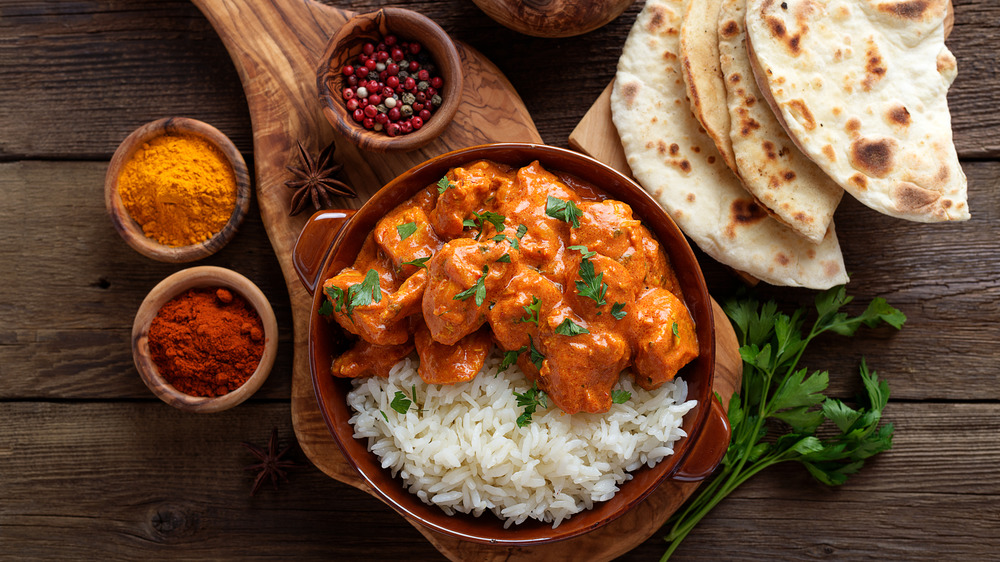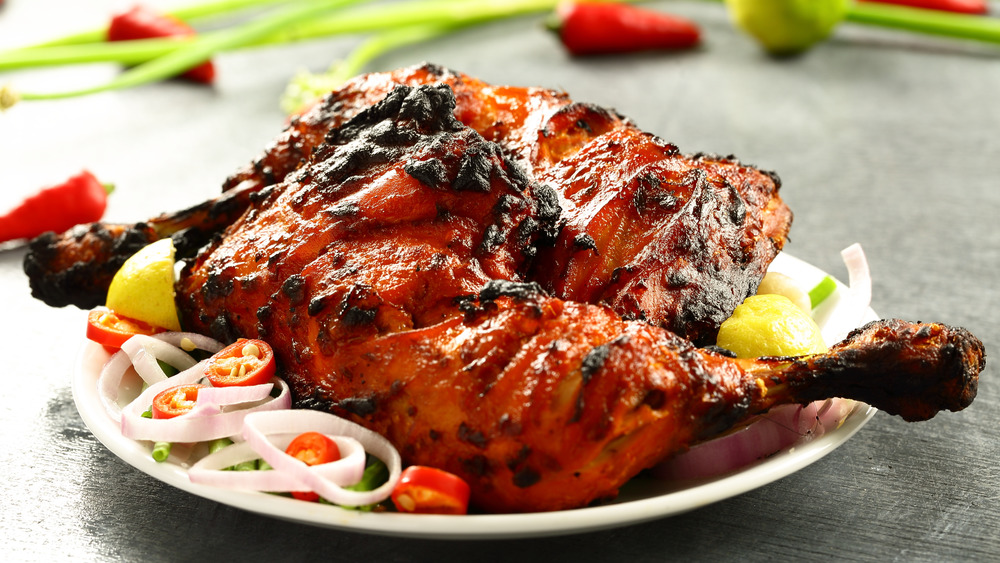Chicken Tikka Vs Chicken Tandoori: What's The Difference?
Indian cuisine has morphed into an international phenomena for a good reason. Nothing can compare to the rich flavors and aromas of our favorite dishes, like butter chicken, Aloo Gobi, and Malai Kofta, among many others. While these have become synonymous with cooking on the Indian subcontinent, their roots lie in Europe and the Americas. According to the BBC, Portuguese traders and English expeditionary forces brought potatoes, tomatoes, cauliflower, carrots and peas with them as they traveled through India, and these ingredients made their way into local recipes as early as the 16th century. With such a wealth of new ingredients, it could make anyone wonder about the origin and differences between the classic chicken tikka and chicken tandoori.
The origin of chicken tikka and chicken tandoori are like night and day. According to The Culture Trip, chicken tikka originated in a Scottish curry house in the 1970s, while chicken tandoori dates back to at least 3000 BCE in Harappa, Punjab (via Times of India). Despite the vast difference in creation dates, the ingredients that go into both chicken dishes resemble one another. According to Urban Tandoor, chicken tikka requires pieces of boneless chicken breast, salt, lemon juice, plain yogurt, and garlic cloves, while chicken tandoori requires either a half or whole chicken in addition to Greek yogurt, red chili powder, garam masala (itself a blend of spices), pepper, coriander, and a ginger-garlic paste. These ingredient differences inform how the dishes are prepared.
Cooking methods and nutritional value
The cooking methods used for chicken tikka and tandoori starkly oppose each other. Chicken tikka requires the chef to coat pieces of chicken breast with yogurt and spices and then grill the pieces on a kebab skewer, while chicken tandoori requires coating parts of the chicken with spices, marinating the cuts of meat in a mixture of oil, lemon juice, and more spices, then cooking the meat in a tandoor oven at temperatures between 250-300 Celsius (between about 480-570 degrees Fahrenheit) (via Urban Tandoor). The high heat of a tandoor oven helps give chicken tandoori its signature flavor, and makes a variety of Indian recipes possible (via Kitchn).
The cooking methods and ingredients of both dishes factor into the nutritional value of both meals, and if you want a healthier chicken, opt for the chicken tandoori. According to Urban Tandoor, both chicken styles contain rich portions of protein, fiber, and carbohydrates, but chicken tikka contains more fat, while chicken tandoori contains a whopping 17.5 grams of protein, versus chicken tikka's 4.2 grams. Those of us new to Indian and Pakistani cuisine might not immediately identify the chicken options when placed side by side, but one bite of each is enough to help us figure out the differences between these massively popular dishes. Next time you go out for dinner and feel adventurous, give chicken tikka or chicken tandoori a try, and let the flavors speak for themselves.

